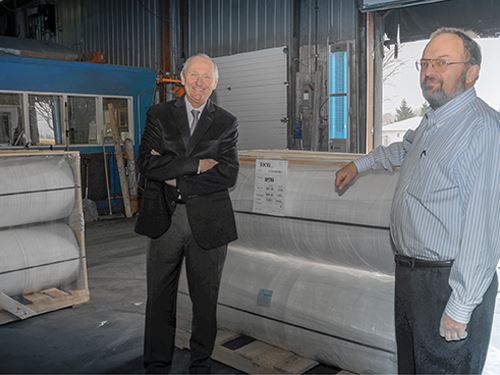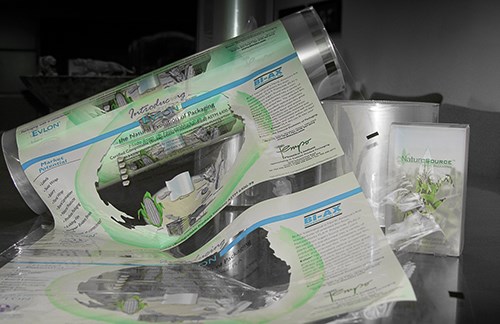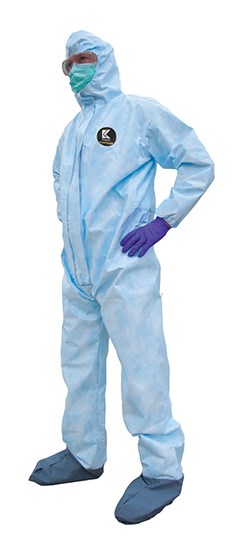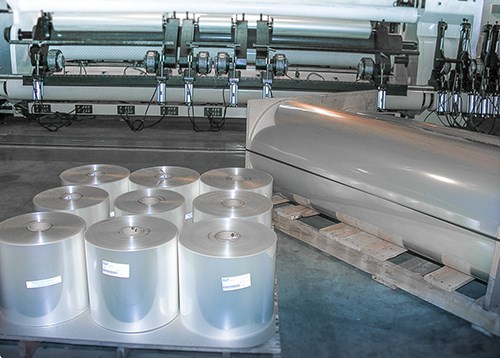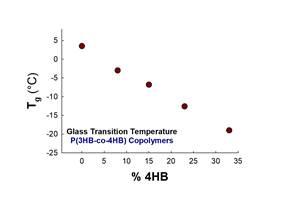BOPP Processor Focuses on Specialties
At one time, BI-AX International produced millions of pounds of BOPP film a year for a wide range of commodity products. But it has since transitioned toward higher-value niche products for medical and packaging.
In the biaxially oriented polypropylene (BOPP) field, size and volume generally rule the day. That’s not surprising, given that so much of this material finds its way into a wide range of food and snack products produced by the big brand owners.
BI-AX International Inc. a Wingham, Ont.-based BOPP producer that started up in 1988, used to play in that high-volume game. It still can: Between its 220,000 ft² plant in Wingham and a 35,000 ft² facility in nearby Triverton, the company runs three BOPP lines—3, 5 and 8 meters wide—with a capacity of 40 million lb/year.
But instead of pumping up the volume, BI-AX has shifted toward higher-end products where its expertise in processing and R&D are bearing fruit.
A family-owned and operated business since it opened its doors, the firm actually started out making polyethylene drainage tubes in 1976, then 10 years later expanded into PE sheet used to make fences around construction sites. Then, after buying a used line from Mobil that it had intended to use for the fencing business, the processor was approached by a large customer about the shortage of BOPP, and decided to enter the film business. “But we’re a small company, and we realized quickly that we could not compete with the larger BOPP producers, so we got out of that business,” recalls Tom Inglis, BI-AX’s general manager and part of the ownership group.
Inglis continues: “We see ourselves now as a specialty film producer. We’re running smaller jobs that the big guys don’t want to be bothered with. We have a different outlook than the bigger guys. They tend to run dedicated lines all day every day. We’re not afraid to change equipment and move things around and do shorter runs. And we stay out of the commodity business. The way we look at it, if a product is available from two or three different film producers then it’s a commodity.”
BI-AX keeps its BOPP lines busy doing a lot of research, product development, and even toll processing for other film producers. “It’s not uncommon for us to work with other film suppliers that want to get into a particular market but can’t quite yet justify buying their own equipment,” Inglis explains.
He adds, “We work collaboratively with other film processors on a regular basis, using our production equipment to scale up what they might have done in their labs. And it’s truly collaborative, because sometimes we simply make product from their recipe, sometimes we tweak it. They might, for example, want a product that’s tacky today but not tomorrow. What we have found over the years is that customers usually know what they want, but not what they need to get there.”
Toll manufacturing can be a volatile business, BI-AX has realized. “Projects may start slow, then suddenly pick up to the point where you have a hard time keeping up. And then at some point, most of the film producers we’ve worked with will ramp up their own production capabilities. So then you’re less busy.” The processor also does toll orientation for processors that don’t have their own machine-direction orientation (MDO) equipment.
TWO SPECIALTY NICHES
These days, BI-AX’s core business is in two areas. One is BOPP for high-end medical uses. It produces a breathable, PP-based microporous film tradenamed Aptra under an exclusive contract with RKW Danafilms Inc. Based in Westborough, Mass., RKW Danafilms is a wholly-owned subsidiary of RKW SE, Europe’s largest film producer (based in Germany). The Aptra film is then sold to Kappler Inc., Guntersville, Ala., which laminates it to a nonwoven fabric to create protective garments used to protect hospital workers and others from infectious diseases such as H1N1 virus (aka “swine flu”) and Ebola.
The Aptra line consists of two products: Aptra Classic is a high-performance breathable film used for disposable clothing in biohazardous environments. It passes ASTM standard F1671 for Viral Penetration and F 1670 for Blood-Borne Pathogens. The film is also used for packaging high-end analytical equipment.
Another Aptra product—designated UV8—targets a much different market: It’s used as a waterproof, breathable roofing material, primarily in Europe.
BI-AX typically runs three extruders on two of its lines. Aptra film is produced from 40 to 50 microns thick on BI-AX’s 3- or 5-meter lines. “The material we produce is extremely soft with a very high moisture-vapor transmission rate,” Inglis states. The polymer science behind it creates micro-voids within the film where water vapor—but not liquid—can pass through. This feature is achieved partly as a result of the manner in which the Aptra film is produced, adds Inglis, who would disclose no other details.
“This is a cyclical product line, depending a lot on what’s going on the world,” says Inglis. “When there is a lot of concern about H1N1 or, nowadays, Ebola, we’re going to see a spike in demand for Aptra. Of course we never can tell what’s going to happen, so we warehouse this product so that we’re ready to ship when called on.” BI-AX ships Aptra film all over the world.
All film lines are equipped with a supervisory control and data-acquisition system that BI-AX updates on a regular basis. The firm also uses on-line gauge control and adjustable-lip dies to correct variations on the fly.
BI-AX worked very early with NatureWorks LLC, Minnetonka, Minn., on developing applications for the materials company’s Ingeo PLA biopolymer. BI-AX produces a product tradenamed Evlon that is used in compostable packaging for snacks, produce, candy, and more. “Actually, we started working with NatureWorks before they were NatureWorks,” says Inglis. “They hired us to make film. There was a learning curve we had to climb to extrude and orient PLA, but we came in on the ground floor and worked closely with NatureWorks throughout the process. Finally we got it figured out and were intrigued by the possibilities, so we went all in.”
Inglis adds, “The products we make are coextrusions, so that adds to the complexity of making PLA film. There was a lot of tweaking before we got it right: additive packages, line speeds, stretch ratios. But we’re at the point where our output rates are going higher and higher, so we feel we have a handle on it.”
The Evlon line is run from 15 microns all the way up to 13 mils, which technically is considered sheet.
Related Content
Film Extrusion: Boost Mechanical Properties and Rate of Composting by Blending Amorphous PHA into PLA
A unique amorphous PHA has been shown to enhance the mechanical performance and accelerate the biodegradation of other compostable polymers PLA in blown film.
Read MoreFollow These Tips to Fire Up Your Cold Blown Film Line
Firing up a cold blown-film line after a shutdown involves multiple pieces of equipment that all interact. Here’s a look at those components individually and some best practices on how to get your line up and running as quickly and safely as possible.
Read MoreNovel Air Ring Solves Gauge Variations for Film Processor
Crayex installs Addex gauge-controlling air ring built for rotating/oscillating dies on a problematic line and notices dramatic improvement in thickness variations.
Read MoreDeflection Elbows Eliminate Streamers for Large Film Processor
New elbows eliminate troublesome streamers to increase productivity at leading blown film processor.
Read MoreRead Next
Making the Circular Economy a Reality
Driven by brand owner demands and new worldwide legislation, the entire supply chain is working toward the shift to circularity, with some evidence the circular economy has already begun.
Read MoreLead the Conversation, Change the Conversation
Coverage of single-use plastics can be both misleading and demoralizing. Here are 10 tips for changing the perception of the plastics industry at your company and in your community.
Read More

